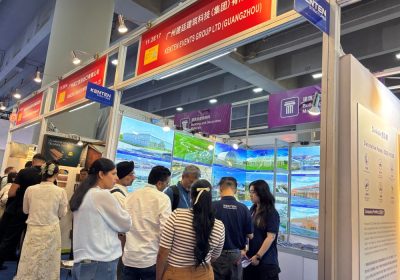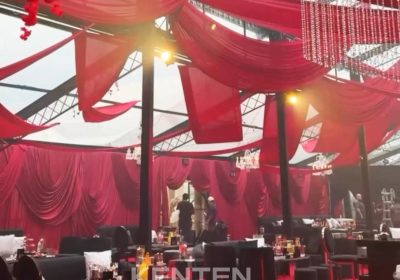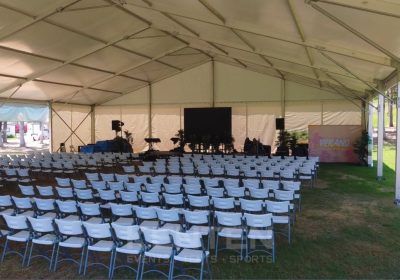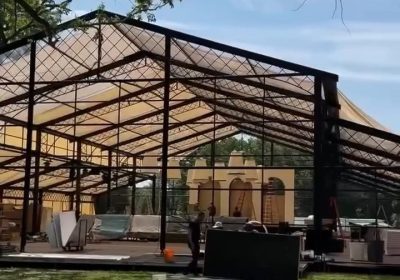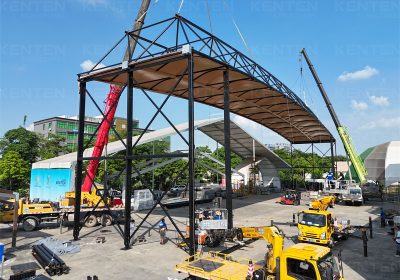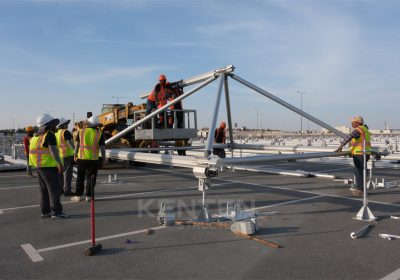Introduction
A semi-permanent tent is an innovative structure that falls somewhere between a temporary shelter and a permanent building. Not only does it provide stronger and more protection from inclement weather than traditional camping tents, it maintains simplicity and flexibility superior to fixed structures. This unique characteristic makes it ideal for a variety of occasions, from luxury resort accommodations to unique event venues to cozy communal habitats.
In this blog, we’ll take an in-depth look at the essentials of semi-permanent tent design and construction, and share some best practices to help you better understand and utilize this innovative form of architecture.
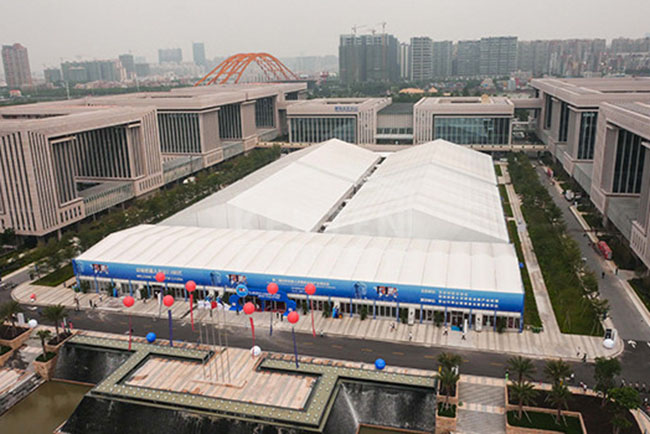
Unique features of semi-permanent tents
- Material Selection
Semi-permanent tents are typically constructed with durable, reinforced fabrics rather than solid building materials. These specialized textile coverings not only provide breathability and temperature control, but are also easy to dismantle or reposition, allowing room for possible future changes. - Frame construction
Semi-permanent tents are framed with sturdy aluminum alloys that are carefully designed and assembled to withstand the demands of multiple seasons and even years of installation. With proper anchoring and maintenance, these frames can effectively withstand the effects of the natural environment. - Multifunctional applications
Semi-permanent tents are used in a wide range of applications, including but not limited to luxury resort accommodations, event venues, sports stadiums, exhibition halls, comfortable living spaces, and more. Regardless of the specific use, they demonstrate creative possibilities beyond traditional permanent structures.
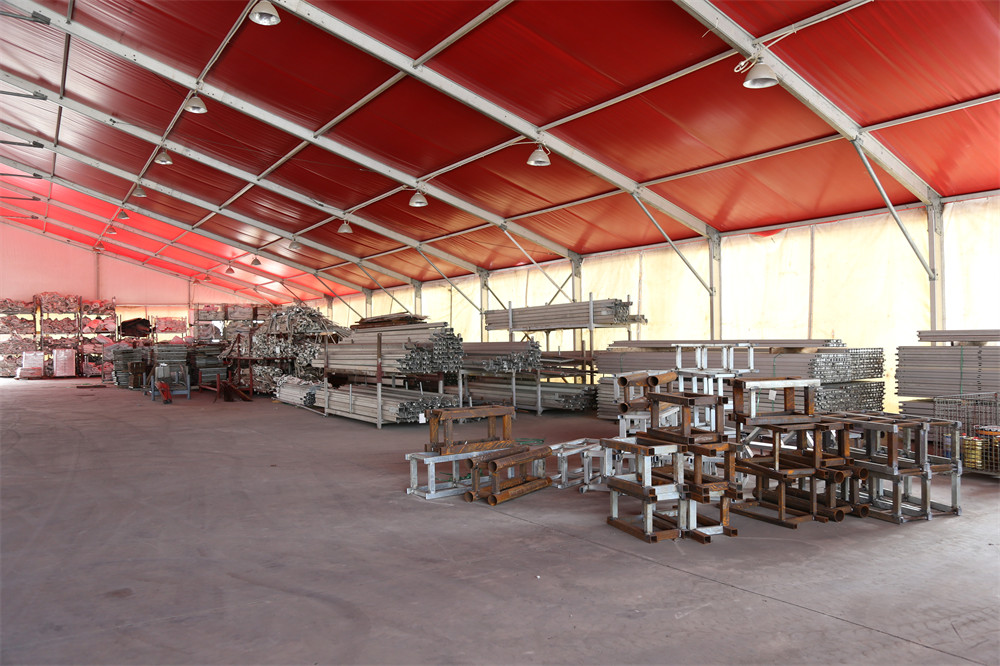
Design Considerations
To successfully design and build a semi-permanent tent, there are several key aspects to focus on:
1. Tension fabric.
- Weatherproofing: the outer fabric must be waterproof, windproof and flame retardant to meet safety standards.
- Multi-Season Suitability: the material should be able to withstand multi-season or multi-year installation requirements.
- Lightweight: although it needs to be strong enough to cover the frame, modular and lightweight to allow for easy erection.
2. Safety
- FIRE PROTECTION: all fabrics and interior finishes are required to meet specified fire ratings.
- WIND RESISTANCE: wind effects are reduced by tensioned anchors and the use of sturdy pillars.
Pre-construction preparation
1. Site planning
- Ground Leveling: clearing vegetation, leveling uneven terrain, smoothing ground surfaces, or installing bedding to provide a level and stable substrate.
- Soil Drainage Assessment: the Engineer shall assess the carrying capacity and drainage conditions to avoid flooding problems during long-term use.
- Measurement Markings: Based on tent dimensions and anchoring requirements, accurately mark stakes and grid lines to guide structure assembly.
2. Construction process.
- Prefabricated components are efficiently assembled on site by a team of professionals according to designer specifications.
- Each step is carefully executed to ensure a solid and functional structure.
Design Philosophy
Creating the ideal semi-permanent tent design requires a combination of visual appeal and functional performance:
- Climate and Environment
Selection of appropriate materials and structural enhancement options based on regional climatic characteristics (e.g., wind direction, temperature range, and potential weather events). - Capacity Requirements
Adapt size and layout to anticipated headcount, seating arrangements, food service and other circulation needs. - Aesthetics
Create a harmonious and unified visual effect by incorporating exterior finishes, interior arrangements, and surrounding landscaping. - Additional Features
Consider adding functional modules such as lighting, storage area, ventilation system and electrical wiring to enhance practicality. - Flexible Adjustment
Reserve room for possible future remodeling or relocation to make the tent more adaptable.
Importance of partners
Realizing creative semi-permanent tent design cannot be achieved without experienced partners. For example, KENTEN has over 25 years of global project experience and specializes in one-stop-shopping from conceptual design to production and installation.
Summary
If you are looking for a professional semi-permanent tent solution, please feel free to contact KENTEN or a similar specialist company who will provide you with tailored service and support!

